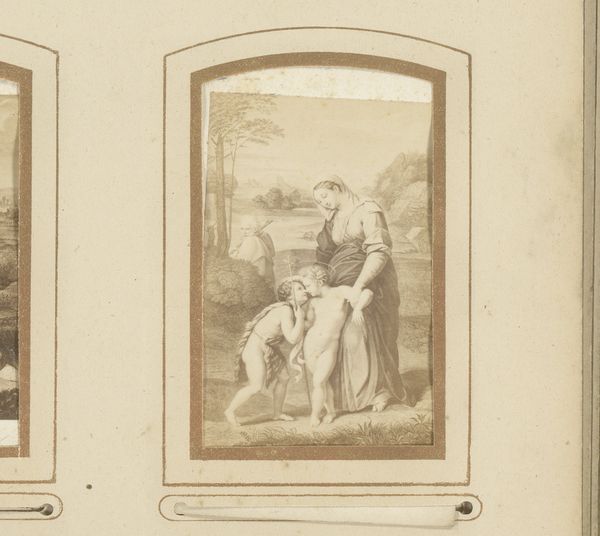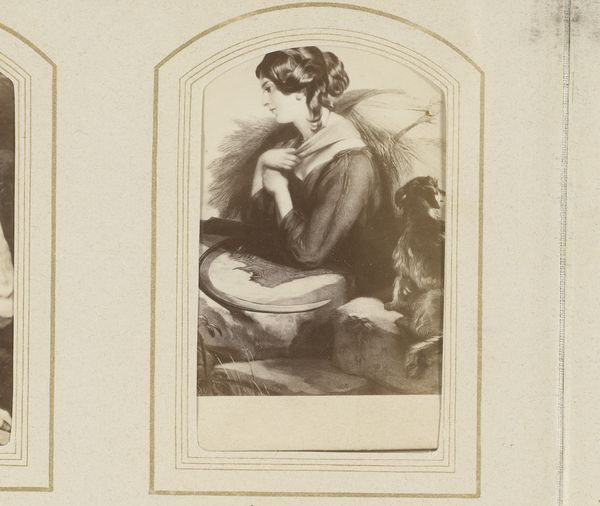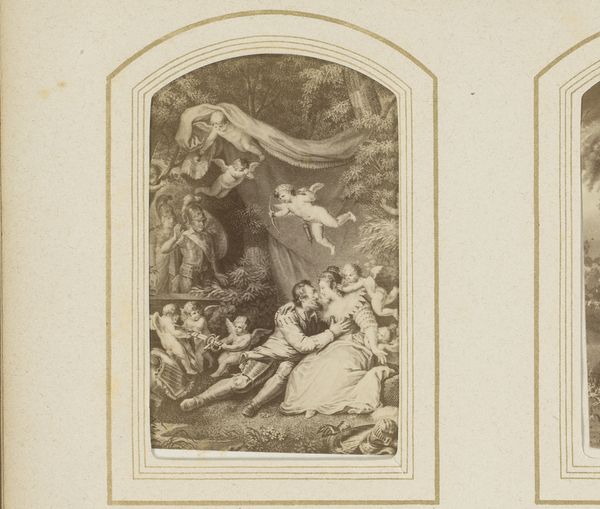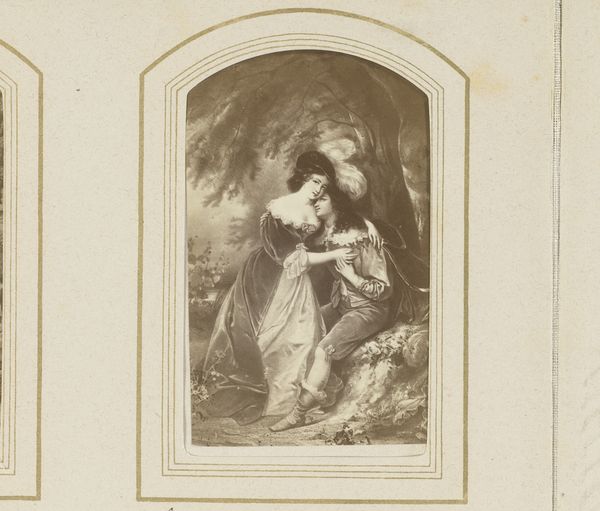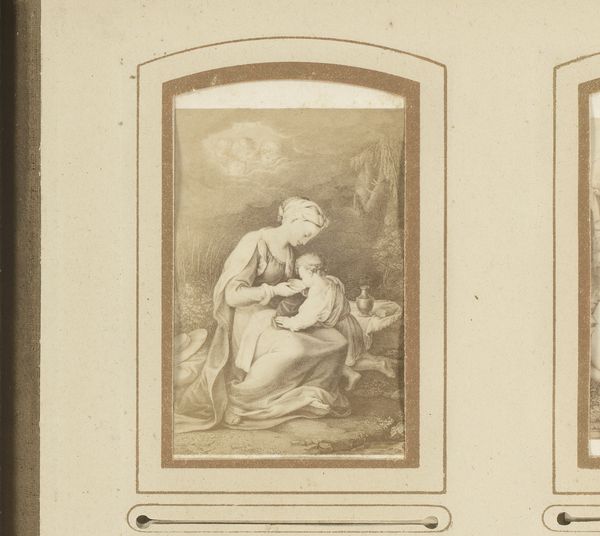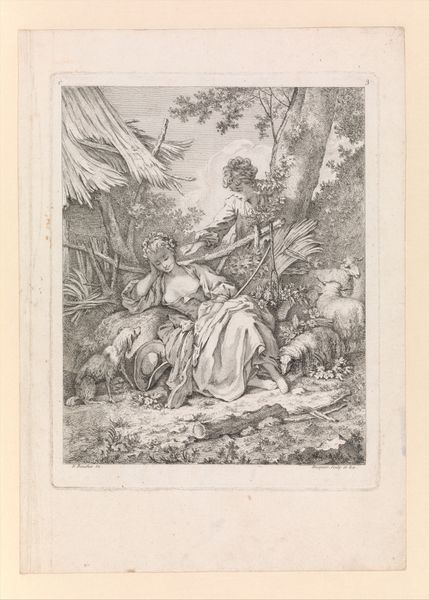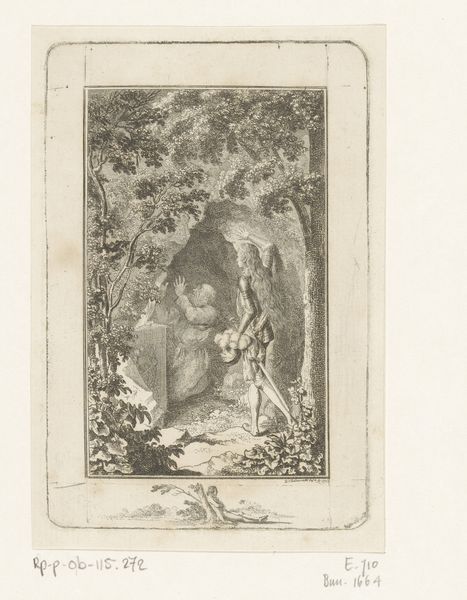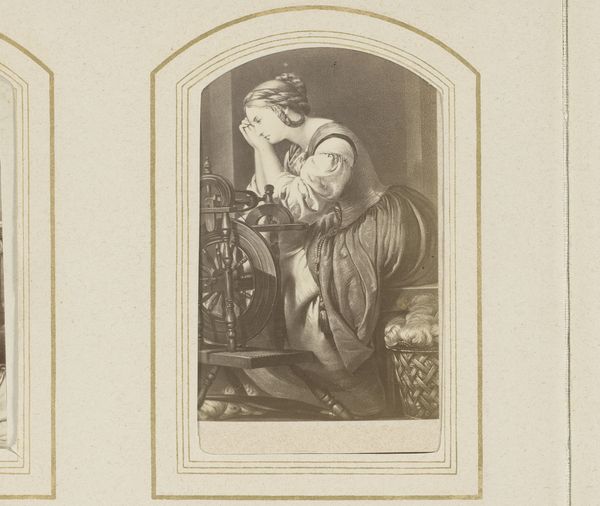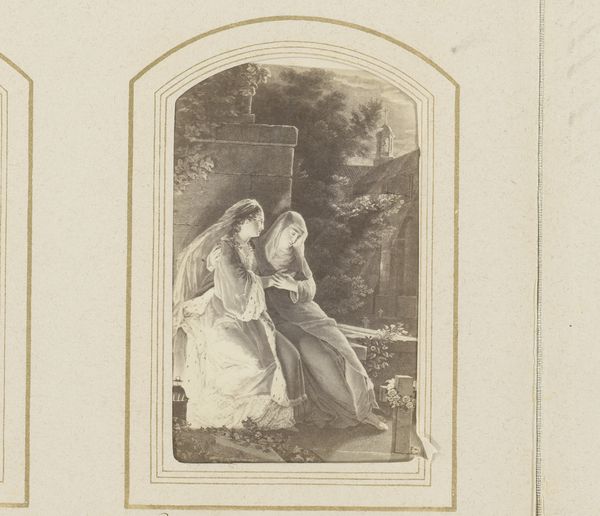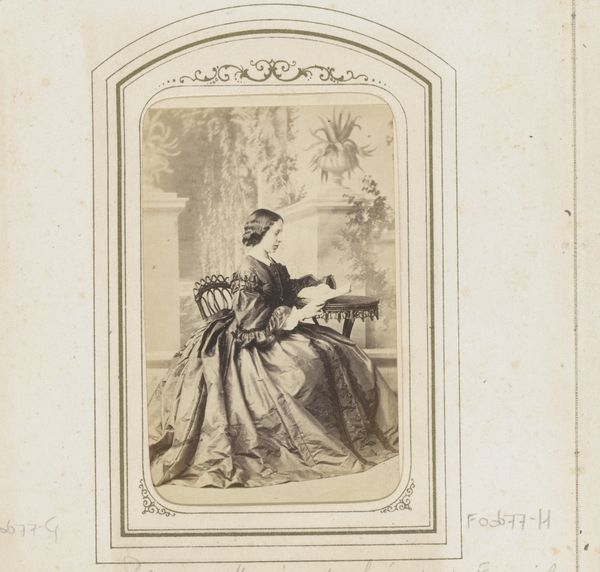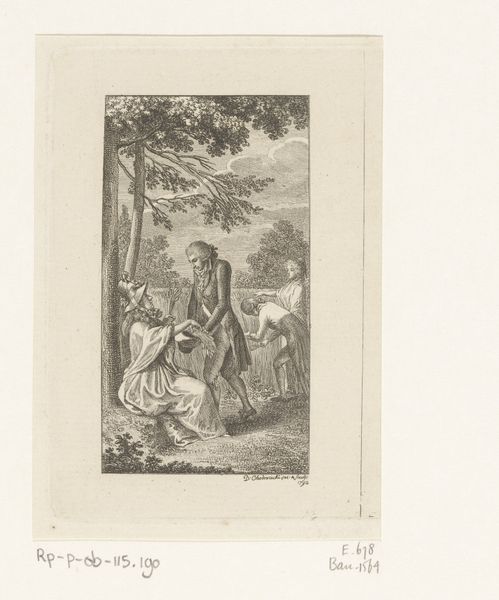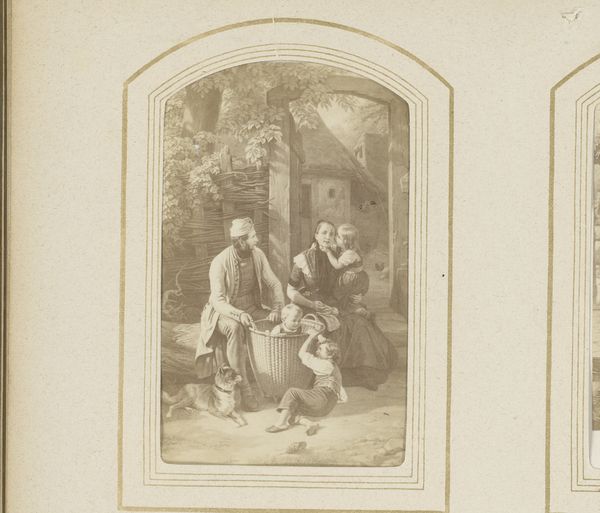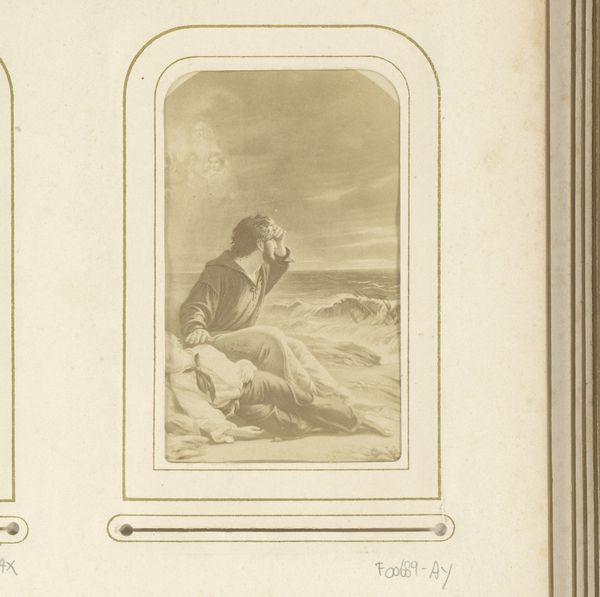
Dimensions: height 100 mm, width 62 mm
Copyright: Rijks Museum: Open Domain
Curator: Immediately I'm drawn to the tender, dreamlike quality. She’s just slipped away, hasn't she? Editor: Indeed. This artwork, titled "Fotoreproductie van La rêveuse," dates approximately from 1870 to 1900. The artist remains anonymous, and it's currently housed here at the Rijksmuseum. Technically, it's a print, more specifically, an engraving. Curator: Anonymous…fitting. It amplifies the universal quality of a daydream, doesn't it? The soft, sepia tones enhance this feeling of faded memory. There's a quiet elegance here, but also a tinge of melancholy, perhaps the ephemeral nature of dreams themselves. And the composition, the drowsing woman nestled amongst the verdant setting, it all works to keep our eye moving through the frame in an endless, calming cycle. It reminds me of old garden frescos. Editor: The visual field certainly evokes Romantic ideals through its aesthetic emphasis on sentimentality and the sublime power of nature. Focusing on the materiality, you see how the artist carefully rendered texture, giving volume to her form through the precise layering of strokes. Consider too, how the contrasting tones form a delicate choreography with line, establishing structure. Look how light interacts with form. Curator: Exactly, it's more than just a reproduction; there's a real sense of texture—look at how that sleeping goat’s fur gives the figure weight and an undeniable groundedness, contrasting her almost angelic languor! One wouldn't think it looking, but she might actually be working! There's a basket and implements with her; perhaps the dreaming offers a quick rest before a needed return to labor! Editor: One may wonder. Either way, reflecting upon "La rêveuse," the artist effectively deploys established techniques—formal balance and tone—to achieve specific themes, and this evokes emotion in ways unique to each person and the relationship that each has with nature. Curator: You're right. Ultimately, it’s about our own reveries, the simple pleasure of imagining other realities. What a generous piece to leave for all.
Comments
No comments
Be the first to comment and join the conversation on the ultimate creative platform.
